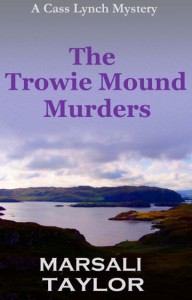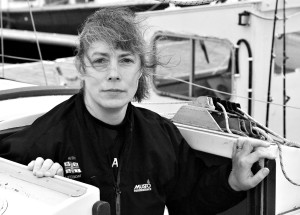Guest Post by Marsali Taylor, @MarsaliTaylor
The world is a more interesting place than our science can explain.
I’ve always been at ease with the idea that the world is stranger and more interesting than our present scientific knowledge can account for. Maybe it’s because I’m Scots; one look at old ballads shows we’re a people used to second sight, omens, superstition, ghosts, devils and companies of the Elven folk. French friends assure me there are no fantomes in French castles, whereas no self-respecting Scottish castle would have fewer than three.
Maybe it’s my own family. My sister has a story of meeting a kilted man who seemed to vanish when she turned her back on him. My mother recalled my granny’s wheelie shopping bag falling from the back of a high shelf at the moment she had a heart attack in hospital; with my artist father, an easel which nobody was near fell over at the time his mother died. I vividly remember having an awful, choking cough one night, and being raised and given a soothing drink which took it completely away. When I bounced downstairs the next morning and asked, ‘What was that drink? It worked like magic!’ my parents stared at me blankly …
On top of that, I’ve subscribed to the wonderful magazine Fortean Times for over thirty years. I’m not sure the world is quite as odd as that, but I’m certainly prepared to be open-minded about the frequently-seen big cats in the British countryside, showers of frogs and sea-serpent sightings. I’m convinced we have a household boggart, and talk to him occasionally, though I’ve not gone so far as to leave milk for him.
Cass, my main character in my detective novels Death on a Longship and the newly-published The Trowie Mound Murders, is a liveaboard sailor with ten years experience of roaming the world’s oceans. In Death on a Longship she recalls having seen a ‘mer-horse, off Fiji, with a glistening neck and blind, saucer eyes’ and in the book currently being edited, A Handful of Ash, she remembers having seen a ghost ship, with ragged sails and dead men climbing the rigging. The sea is a good place for seeing strange things, especially from a silent sailing craft.
Cass grew up in Shetland, which is rich in traditional lore. Her friend Magnie, a retired whaling-man who taught her to sail, is full of good stories, or yarns. When two visitors spot a grassy mound which they think may be a Neolithic chambered cairn, Cass tells them that it’s known as a ‘trowie mound’ (the word trow comes from the Scandinavian troll), and urges Magnie to recount the story of the fiddler who was invited to play for a trowie wedding:
It was Magnie’s best story and he told it well, from the midsummer-eve opening by that green hillock, when a local fiddler was asked by a small, brightly clad man if he’d come and play at a wedding, through the description of the trowie celebrations to the man awakening by the knowe again, to find the landscape changed around him, old houses gone and new ones grown. ‘And he went back, that man, to his ain hoose, and the folk there stared at him, until the auld man by the fire minded tales o’ his own grandfather, who’d disappeared one night and never been seen again, and that was this very man.’
‘And what happened to him then?’ Sandra asked.
Magnie’s rare smile wrinkled up his weathered face. ‘You’re thinking he mebbe withered up in front of their eyes? Na, na. Well, they asked him to bide, he was their own kin, but he never settled. There was naebody he kent, you see. In the end he spent day after day ida kirkyard, joost lookin’ at the graves. Then, when midsummer came round again, he said he’d had enough. The trows would be glad o’ a good fiddler, he said, and midsummer eve they’d be out and about, if ever they were. He’d go up to the knowe and ask to be taken in. So that night up he went and that was the last they ever saw o’ him. But sometimes you’ll hear – and I’m heard it myself – you’ll hear a strain o’ fiddle music coming out of that very mound, or see lights moving around it, and I’m seen that too.’
Magnie’s story is a traditional one; I’ve had the very cottage pointed out to me. The moving lights he describes are a feature of my own village. They were at a house called Slyde, and I’ve been told they were common enough for folk to detour on the way home from a dance ‘to watch the Slyde lights.’
‘Just like people coming down the hill carrying a lantern,’ one person told me. ‘You’d see them from the other side of the voe, but the old man that lived there, he never saw them at all.’
Interestingly, our voe, or sea loch, is right on a fault line – we’ve even had an earth tremor here, centred just two miles from our house. I wonder if the Slyde lights were some form of piezo-electricity?
Another of Magnie’s tales that’s featured in The Trowie Mound Murders is a selkie (seal-human) story which gives Cass troubled dreams:
I’d dreamt last night about Magnie’s selkie wife, one of those dreams that left you with a sense of foreboding that clung like a dark mist for the rest of the day. I’d been that selkie wife, born a seal and delighting in the roughness of the waves, yet shedding my skin to be a woman on shore, and dance on human feet in the moonlight – until a young fisherman had hidden my skin and kept me for himself. In the dream, I’d loved him, and melted into his arms. I wasn’t going to give the face a name, not even to myself. But my selkie wife had grown gnawingly, achingly, heartsick for the sea, and I’d searched for my skin in the bare house with its driftwood furniture, in the cluttered byre under the old dogskin buoys and tangle of lines, until I’d become frantic, thinking he’d destroyed it, and I’d be trapped on this heavy land until I died of longing. I’d run into the sea, leaving my baby wailing in its cradle, and awoke gasping as my mouth filled with water –
I knew where the dream had come from. My friend Magnie had been telling ghost stories, and one of them had been of the wailing baby, the selkie wife’s deserted child, which had sickened and died without her. I knew why too. It wasn’t hard to analyse. After a dozen years at sea, as yacht skipper and dinghy instructor, I’d decided to go for a commercial qualification at the North Atlantic Fisheries College in Scalloway, Shetland’s ancient capital. … I was dreading it, a year of school, of being trapped day after day ashore, stuck in this northern climate, with no chance of tiers of white sails above my head, and the southern cross bright before the prow in the blue-black night. I was afraid that I wouldn’t be able to do it, that the call of the sea would be too strong…
Later in the story, Cass and her crew Anders hear the crying baby for themselves … and when one of her sailing pupils goes missing, Cass sets off to discover the secrets of the Trowie Mound.
It’s fun weaving another world into my stories. There’s a tradition in detective stories that the world has to be rational, and everything has to be explained in the last chapter; but I want to keep resisting that. The murderer is unmasked, of course, and the plot explained, but Cass still knows that she lives in a world which includes a mer-horse, off Fiji, with a glistening neck and blind, saucer eyes.
Death on a Longship and The Trowie Mound Murders are both published by Accent Press, and available from Amazon as book or e-book. Cass’s third adventure, A Handful of Ash, is set in the ‘witches’ town’ of Scalloway, and will be available as an e-book from July.
 Marsali Taylor grew up near Edinburgh, and came to Shetland as a newly-qualified teacher. She lives with her husband, five cats and two Shetland ponies on Shetland’s scenic west side. Marsali is a qualified STGA tourist-guide who is fascinated by history, and has published plays in Shetland’s distinctive dialect, as well as a history of women’s suffrage in Shetland. She’s also a keen sailor who enjoys exploring in her own 8m yacht, and an active member of her local drama group.
Marsali Taylor grew up near Edinburgh, and came to Shetland as a newly-qualified teacher. She lives with her husband, five cats and two Shetland ponies on Shetland’s scenic west side. Marsali is a qualified STGA tourist-guide who is fascinated by history, and has published plays in Shetland’s distinctive dialect, as well as a history of women’s suffrage in Shetland. She’s also a keen sailor who enjoys exploring in her own 8m yacht, and an active member of her local drama group.

Considering Scotland is the home of Loch Ness and its famous monster, I can understand why you’d think the unusual was usual and it would fit in with your story. (And I’ve seen Loch Ness – no Nessie though.)
Little scary that someone unknown gave you magic cough medicine though…
I like a little unknown woven into stories. Many won’t admit it, but I think a lot of people have had experiences they can’t explain. Your books sound intriguing. Wishing you much success, Marsali.
Elizabeth, hope you and your family are having a wonderful Memorial Day.
Elizabeth – Thanks for hosting Marsali.
Marsali – There are definitely things that cannot be explained by science or rational thought. I think it takes real skill to integrate them into the plot of a novel and still make the story really believable. I respect people who can do that.
I love a bit of paranormal interwoven and have tried to do it in most of my books. It’s rewarding when it works. Thanks for this post.
Mary Montague Sikes
Those ‘what if’s and ‘maybe’s can make a story special! That mix of reality and possibilities is fun!
I’m so glad for this column! I’d never heard of Fortean Times, but went promptly over there in delight and came back to thank you. I’m also pleased to find the next series I shall devour. I’m trying with a light hand to work a hint of paranormal into my first book, and it’s wonderful to have these books as a sort of master class in how to deftly handle the mix of story into your story.
I got addicted to the show Medium on Netflix over the winter…and I have to say, it was the paranormal part of it that drew me in. I hate traditional detective/crime shows, but this one was different because of the paranormal element. It gave it a bit of a haunting feel!
Thank you all for those comments! I’m glad I haven’t come across as completely mad – do try the book, and let me know if you enjoy it via my website, http://www.marsalitaylor.co.uk, or my Facebook page. Mary and Magdalene, good luck with your writing, and may inspiration strike! Thank you, Elizabeth, for letting me join your site – it was a real pleasure.
[…] 3, https://beta.elizabethspanncraig.com/2148/working-paranormal-element-mysteries/ […]